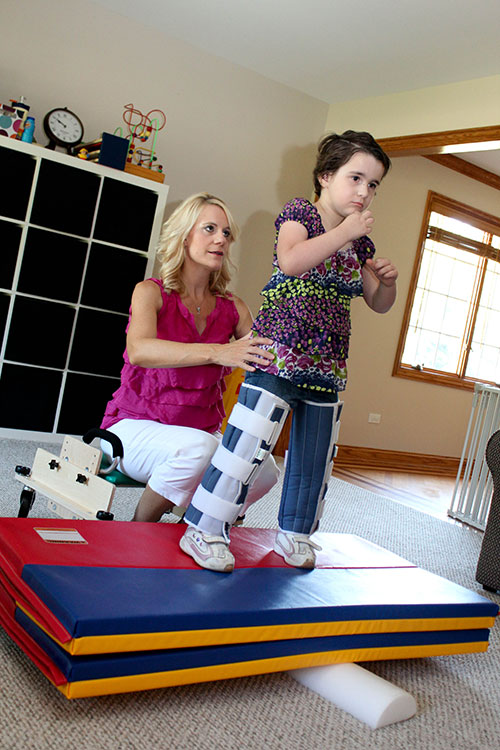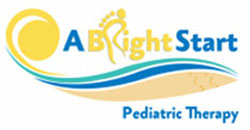
Diagnoses commonly treated by pediatric physical therapists include but are not limited to
- Torticollis and Plagiocephaly
- Developmental or Gross Motor Delay
- Gait Abnormalities
- Toe-walking
- Coordination and Balance Disorders
- Hypotonia
- Down Syndrome
- Stroke
- Juvenile Rheumatoid Arthritis
- Cardiopulmonary Disorders
- Genetic Disorders
- Autism
- Neurological Conditions
- Cerebral Palsy
- Muscular Dystrophy
- Spina Bifida
- Hydrocephalus
- Traumatic Brain Injury
- Spinal Cord Injury
- Orthopedic Conditions
- Post-Surgical Rehabilitation
- Post-Fracture
- Scoliosis
- Sports Injuries

Physical Therapy Treatment Techniques
- Developmental Activities
- Stretching and Strengthening
- Therapeutic Exercise
- Neurodevelopmental Treatment
- Gait Training
- Kinesiotape and Therapeutic Taping
- Stabilizing Pressure Input Orthoses (SPIO)
- Sensory Integration Techniques
- Balance and Coordination
- TheraTogs
- Home Exercise Program
- Evaluations for Positioning and Mobility Equipment
- Orthotics
- Alignment and Posture
What is Congenital Muscular Torticollis?
Congenital Muscular Torticollis (CMT) is a tightening and shortening of muscles on one side of an infant’s neck, particularly the Sternocleidomastoid (SCM) muscle. CMT may be caused by intrauterine crowding, abnormal positioning in the uterus such as being in a breeched position, or muscle trauma during a difficult delivery. Extra pressure on one side of the SCM can cause fibrosis or shortening of the muscle. Muscle banding or a mass or lump can sometimes be felt on the side of the infants neck. Some babies with CMT may also have developmental dysplasia of the hip caused by abnormal positioning in the womb or a difficult childbirth. A customized treatment approach by a pediatric physical therapist is often the most beneficial form of treatment for an infant who has congenital muscular torticollis.
Read More (PDF) Treatment Ideas (PDF)